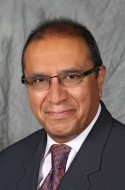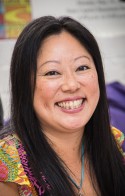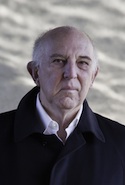
The candidates for mayor of Los Angeles have had ample opportunity to address the city throughout the primary race and the runoff. But have they said what Angelenos want—and perhaps need—to hear? In advance of Zócalo’s live mayoral debate, “The Race for Mayor, Education, and Life in Los Angeles,” we offered a few different citizens of the city the opportunity to speak for the candidates, and in about 300 words or so, tell us what their “dream” mayor would say to Los Angeles.

“My fellow Angelenos, I want to ask you to focus your vision on the future. Let’s think beyond tomorrow’s schedule and the next election. Let’s imagine Los Angeles in the year 2030 because the public policy decisions that we make today will determine the future for the next generation of Angelenos.
Today we have a chance to create something that is bigger than any one of us. I believe we can turn Los Angeles into the model city for the next century.
My vision for a model city includes a network of communities populated with people who are willing to take responsibility for working toward a greater good … a city where residents care for their neighbors … a city that invests in the future of its children, a city that has safe neighborhoods and drivable streets … and a city where my colleagues on the City Council and I are willing to work through our differences on behalf of the people we represent and to work to improve the quality of life by leveraging our existing resources.
I won’t sweep our challenges under the rug. As your mayor, I am willing to expend the political capital needed to attract new investments to our city. Los Angeles is home to some of the greatest public and private colleges and universities. We must engage with them to develop research and foster innovation that stimulates local business, industry, and our public institutions. When business and industry thrive, more Angelenos can find jobs that pay a decent living wage. When evidence-based research informs important public policy decisions, parks, libraries, and public safety have a better chance of offering programs and services for those who need them the most.
We may be separated by freeways, religion, education, language, and geography. But be it Eastside, Westside, South L.A., or Valley, what binds us all together is the desire for a better Los Angeles. I hope that I can count on your commitment to work with me to make Los Angeles the envy of cities all over the world. The only way that we can become a great city is if we all work together to build a stronger Los Angeles.”
Martín J. Gómez is vice dean of libraries at the University of Southern California.

“The future of Los Angeles is being created now in the hearts and minds of our city’s children and in the homes of our city’s working families. It has the potential to be an amazing future, because their potential is limitless, but too often we get caught in boxes that trap their potential instead of freeing it. For example, we’ve created a dialogue about education funding and educational equity that completely overlooks the years that are most crucial to a child’s development: zero to five. Likewise, we’ve locked ourselves into a false debate about education reform that pits protections for workers against new educational opportunities for their children. I don’t see two opposing interests. I see a pair of joined needs: good jobs and education. Working families need both urgently.
To the kid with special needs: I see your potential. To the child who traverses a neighborhood battling violence to get to school: I see your need for safe passage. To the kid who is bullied because he is overweight, or gay, or poor, please listen to me, as your mayor: This city needs you to believe in yourself, and we will do everything to show you that we value you, your health, your safety, your educational opportunities, and your family’s ability to survive economically.
We have to look at and comprehend the whole child, her whole context. A child can’t learn if she is hungry or scared. A child can’t thrive if his parents are working two jobs each, and they still don’t have healthcare. As your mayor, I pledge to feature you, the beautiful, diverse array of Los Angeles kids in more than photo ops. I pledge to keep you and your precious potential as the guiding motivation and purpose of my administration.”
Courtni Pugh is a seasoned activist, community organizer, and political strategist. Pugh is the executive director of the Service Employees International Union (SEIU) Local 99, the SEIU’s largest education workers union.

“I know there has to be more to the mayor’s race than jobs and economics. The next mayor of Los Angeles has to be more than a controller, the next Mayor has to be a liberator—not just a bookkeeper but a leader. He or she must be the mayor of the Wetlands, the mayor of the Parks, the Mayor of the Los Angeles River, the mayor of this diverse city’s Soul.
The next mayor should rebuild Pershing Square and change its name. Return it to the heart of the city, take out the hard scape and the dopey tower, the parking garage with its ramps keeping people from seeing in or seeing out, and put in a café and plant more trees. And why, in a city where so many of our citizens come from south of the border, should we name our central city park after a man who invaded Mexico? Let’s re-name it after the great Mexican poet, Octavio Paz: Peace Park.
One of my biggest challenges as the next mayor is not just to be an environmentalist—most of us Angelenos consider ourselves environmentalists—but an infrastructuralist. We live in a built environment, and the L.A. River is part of it. We are not just restoring our river to a state it never was; we’re building a new and better 52-mile-long river—a river that is critical both for the city’s transportation and for recreation. It’s going to take a generation to finish the project, but I pledge to jump-start the work ahead by completing the Los Angeles River bikeway from the mountains to the sea—from the west valley to downtown to Long Beach—during my term in office!!
Perhaps the greatest opportunity to make Los Angeles a more livable, breathable city lies right in the middle of our vast megalopolis, in the last active railroad yard in the city, Piggyback Yard—the 125-plus-acre Union Pacific railroad facility just across the L.A. River from Union Station. The Piggyback Yard is the largest single-owned parcel in the central city, and it has been a railroad facility with nearly a mile of riverfront since the late 19th century. Does anybody think it will be a railyard deep into the 21st? As mayor I will take an active role in the evolution of the Piggyback Yard—working with some of L.A.’s best architects, landscape architects, hydrologists, planners, and others who care about the future of the city—to turn it into a combination of flood detention, parkland creation, and wetlands restoration, along with low- and high-rise and campus development. (See Piggybackyard.org for details.)
Pershing Square, the L.A. River, and the Piggyback Yard are just a start of my pledge to you: My administration will make Los Angeles the greenest city on earth.”
Lewis MacAdams is the founder and president of Friends of the Los Angeles River. His selected poems, Dear Oxygen, was published last year by the University of New Orleans Press.



